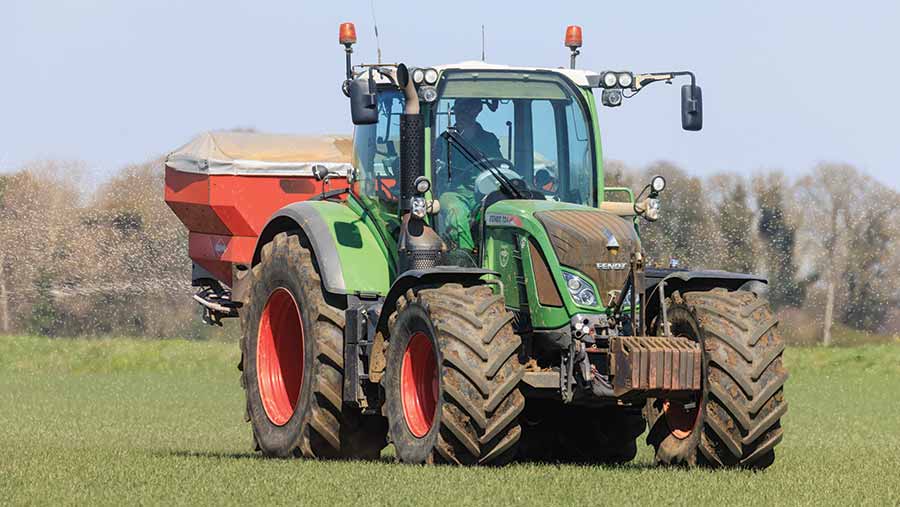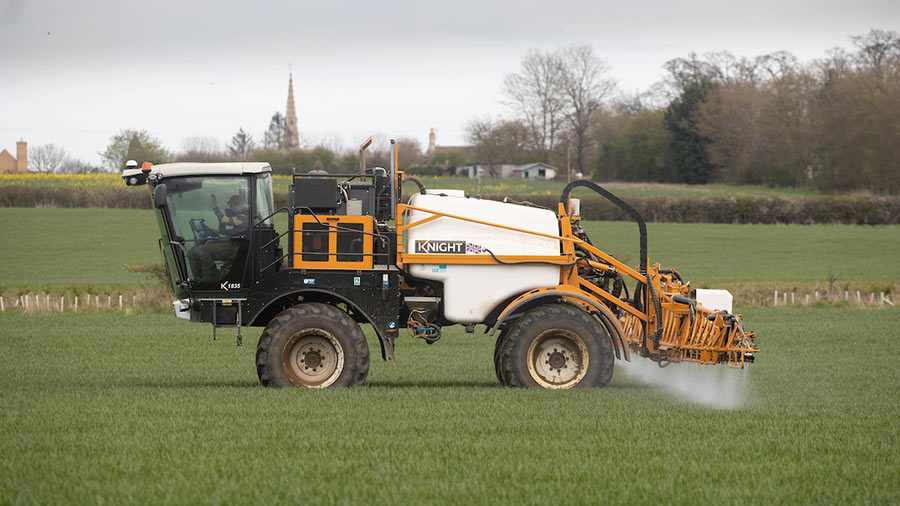Cereals 2023: Two agchem firms launch N-fixing products
 © Tim Scrivener
© Tim Scrivener Both Corteva and Syngenta are offering growers biological products aimed at fixing nitrogen from the air for crops to use.
While both can help farmers raise yields or trim their nitrogen fertiliser rates, a key difference is that Nuello iN from Syngenta is a seed treatment and Corteva’s BlueN is a foliar product applied at growth stage 32.
See also: How six farmers hope to earn regen farming premium
We take a look at what they are and how farmers can benefit from their use next season.
Syngenta
Formerly known as Tiros, Syngenta has exclusive rights to market Nuello iN in north-west Europe and has spent the past two seasons trialing it, which reveal a number of benefits.
Dr Jonathan Ronksley, Syngenta’s field technical manager, says biological products can have a role in helping farmers reduce their carbon footprint.
Artificial fertiliser is made using a very energy-intense process, but endophyte bacteria fix nitrogen from the air.
One key feature of Syngenta’s product is that the endophyte bacteria are applied as a seed treatment, which has been proven to fix nitrogen in US trials.
Recommended for use in winter wheat and barley, Jonathan says it contains a mix of two endophyte bacteria – Pseudomonas siliginos and Curtobacterium salicaceae.
The bacteria were discovered in giant poplar and willow trees along the nutrient-poor river banks of the Washington State mountains.
They were responsible for fixing up to 65% of the nitrogen to these giant trees.
Once drilled, the bacteria enter the roots and colonise the rooting system and leaves.
They remain in the plant, fixing nitrogen for the rest of the season.
Replicated winter wheat nitrogen response trials in 2022 demonstrated an average benefit equivalent to 30kg/ha extra N.
So how can farmers use this benefit? Jonathan believes there are three situations:
- Combine it with a full nitrogen fertiliser programme to raise yield
- When the cost of nitrogen fertiliser is high, like this season, farmers can maintain yield while applying 30kg/ha less nitrogen
- The seed treatment also gives yield benefits in nitrogen-limiting situations such as on light land and with second cereal. In 2022 trials, yield benefits were seen at 11 of the 14 light land sites and seven of the 10 second cereal sites.
Jonathan says it is also a good insurance policy for when dry conditions result in fertiliser sitting on the soil surface and not being taken up by the plant.
He points to a trial last year near Newark looking at winter wheat and hybrid barley.
Half was applied in April, but the prills sat on the surface and were not taken up until May, after the rain. He saw a 0.5t/ha yield boost in wheat and 0.3t/ha extra in barley.
In Adas trials, researchers adopted a fertiliser-saving approach over 15 split fields.
Despite reducing nitrogen by 30kg/ha, the yield was unchanged at 10.83t/ha versus 10.80t/ha. This gave a return on investment of 3:1.
Nuello iN
- Mix of two bacteria – Pseudomonas siliginos and Curtobacterium salicaceae
- Seed treatment

© Tim Scrivener
Corteva
Making its debut at Cereals, BlueN is a biostimulant that contains the natural bacteria Methylobacterium symbioticum, which fixes nitrogen from the air for the plant to use.
When sprayed on the crop, the bacteria enters the plant through the stomata and colonises inbetween the leaf cells, explains Corteva category manager John Sellars, who looks after company’s biologicals portfolio.
The bacteria converts nitrogen gas into ammonium, resulting in a constant supply of nitrogen to the plant.
Overall, using the product equates to about 30kg/ha of N fertiliser, and John says farmers can either use it in addition to an existing fertiliser programme or to maintain yield when trimming back fertiliser rates.
However, trials show a yield benefit of about 1-2% when used with a fertiliser programme.
For sugar beet, he recommends going with a lower overall fertiliser programme to avoid high nitrate levels in the root.
In oilseed rape, although the optimal approach is for an autumn application, crops can lose leaves in a harsh winter.
So for the Midlands and North, John advises an early spring application instead.
Blue N
- One single bacteria – Methylobacterium symbioticum
- Foliar product applied at GS32

